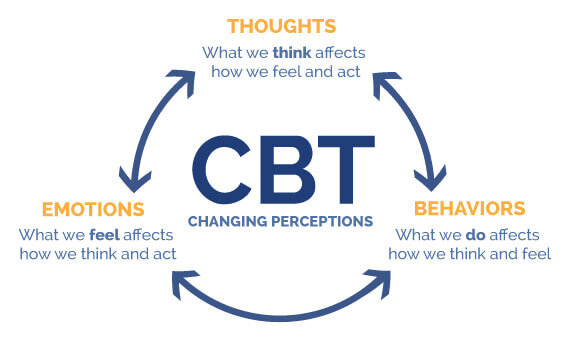Understanding CBT
Cognitive Behavioral Therapy or CBT is a therapeutic approach that aims to challenge and rewrite unhelpful or negative thoughts and behaviors by examining how one thinks (cognitive) and behaves (behavioral). CBT works to instill emotional regulation and coping techniques in individuals in order to solve interpersonal challenges. This is done by focusing on setting goals for concerns that are causing distress in the present and learning skills to cope.
What can CBT help with? CBT has shown to be effective for a wide range of issues but is most commonly used for: anxiety, depression, substance misuse, low self esteem, stress, and relationship issues.
CBT is based on the cognitive model, which refers to how individuals perceive a certain situation being based more on their reaction than the situation itself. Simply put, our thoughts affect how we feel, which impacts how we behave, which reinforces how we think. It’s a cycle that can keep one stuck in an unfavorable pattern of thoughts and behaviors.
Here’s an example: Say you’re invited to a happy hour with some co-workers (trigger), you start to think, “They don’t actually want me there, they were just being nice” (thoughts), you start to feel embarrassed and anxious (feeling), which causes you to decline the invite (behavior).
A CBT therapist would work to challenge the negative thoughts and ask for the evidence that supports or goes against them. Together, the process of rewriting negative thoughts would be done to influence more positive thoughts and feelings.
Part of CBT is assisting individuals in identifying what they want most from life and building the skills to move toward those goals. These skills help to change one’s way of thinking and behaving to achieve lasting improvement in mood, sense of well-being, and overall functioning.
By changing the way we think and behave, we are able to get out of our own way and achieve the vision of our life we desire.

